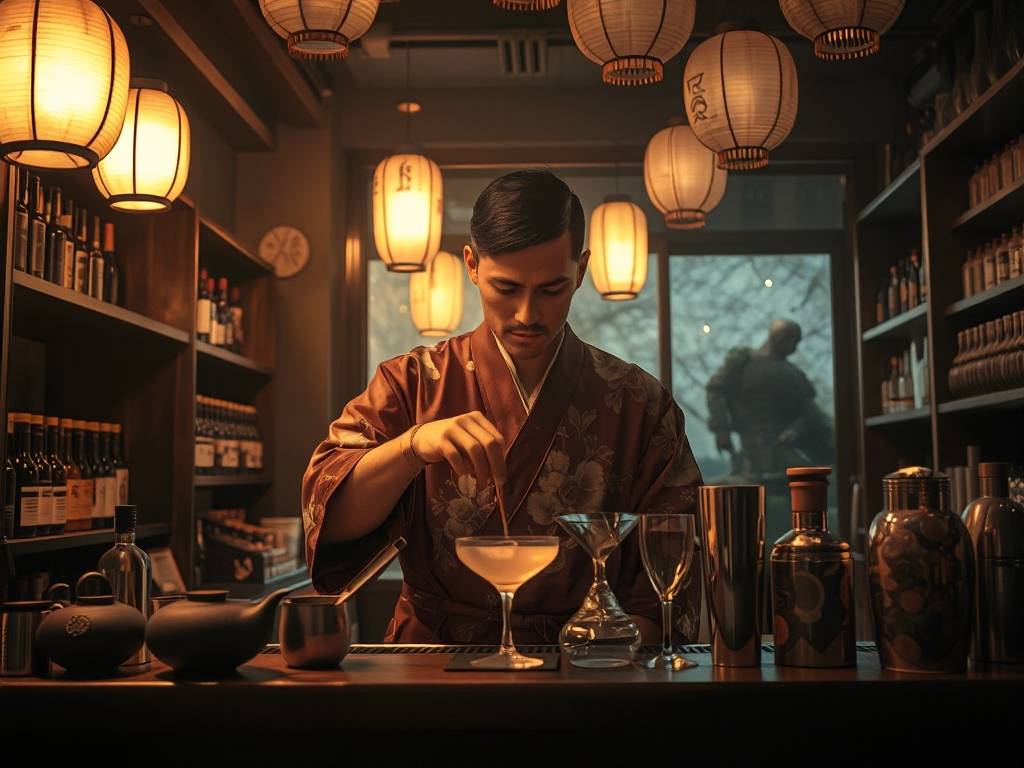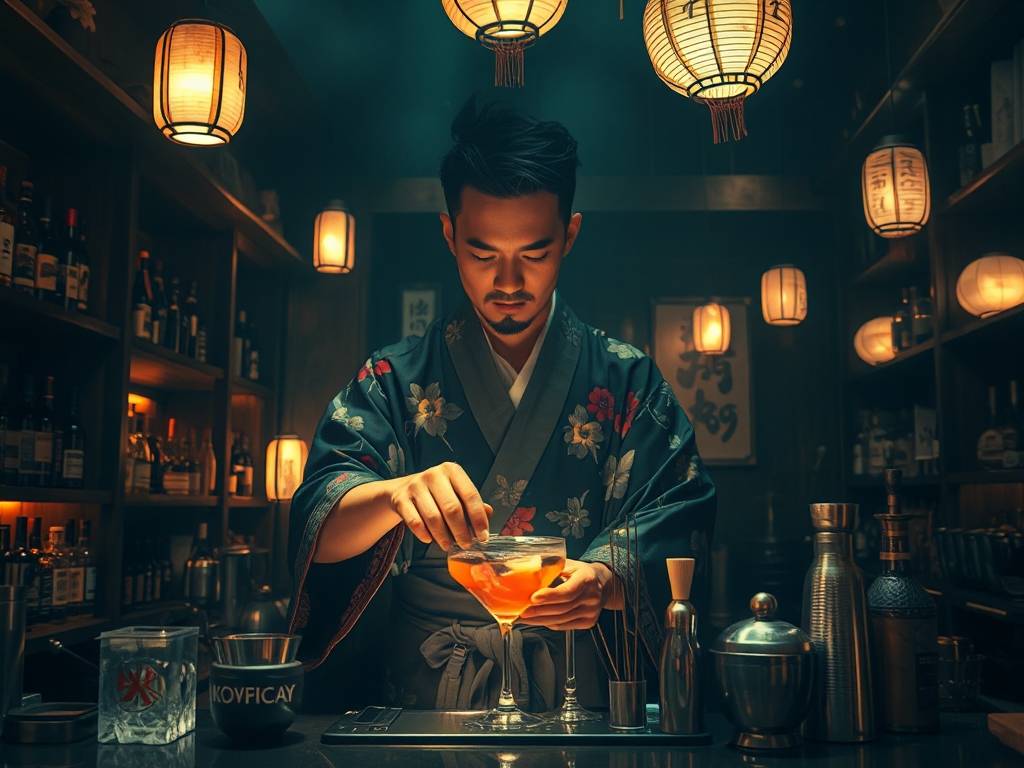Japan Travel
Kyoto’s Hidden Bar Gear Reviews: Read About Drink Tools
Unlocking Kyoto's Drinking Culture: An Insider's Guide to Essential Bar Gear

There's a certain magic to discovering a hidden bar in Kyoto. Tucked away from the bustling tourist paths, down a narrow alley, or behind an unmarked wooden door, these intimate spaces, known as ochaya (tea houses) or akachōchin (red lantern) bars, offer a portal into the city's soul. The experience is one of profound ritual and sensory delight. But have you ever returned from such a trip, bought a beautiful bottle of Japanese whisky or a delicate sake, only to find you can't quite recreate that perfect taste at home? The secret often lies not just in the spirit, but in the tools used to serve it. The right bar gear is the unsung hero of Japanese drinking culture, transforming a simple pour into a ceremony.
This guide is your key to that world. We’ll delve into the essential drink tools that define the Kyoto bar experience, offering practical reviews and insights to help you select, use, and appreciate the gear that makes every sip a journey back to those hidden Gion and Pontocho sanctuaries.

The Heart of the Matter: Essential Tools for the Authentic Experience
The beauty of Japanese bar tools is their perfect marriage of form and function. Each item is designed with a specific purpose, often to enhance the aroma, temperature, or texture of the drink. Let's explore the core items every enthusiast should know about.
1. The Jigger (Jiggā - ジガー): Precision in a Small Package
In a Kyoto bar, the bartender's movements are a study in economy and grace. At the center of this dance is often a simple, double-sided metal jigger.
- What it is & Why it Matters: While free-pouring has its place, the jigger is non-negotiable for classic cocktails and ensuring consistent balance. Japanese bartending is renowned for its precision, and the jigger is the tool that guarantees a perfectly balanced Sakura Martini or a Whisky Highball every single time. Using one is the first step toward that level of craftsmanship at home.
- What to Look For & Our Top Pick:
- Material: Stainless steel is king. It's durable, easy to clean, and doesn't retain odors. Look for a brushed or polished finish that feels good in your hand.
- Design: A popular style is the "Japanese-style" jigger, which is taller and narrower than its Western counterparts. This design offers greater control and a cleaner pour. The edges are often rolled or rounded for comfort.
- Capacity: A 1-ounce (30ml) / ½-ounce (15ml) combination is incredibly versatile for most classic recipes.
- Long-tail Keyword in Action: "The best Japanese style jigger for precise cocktail measurements" would lead you to something like the Yukiwa Magnetic Jigger. Its slim profile, perfect weight, and magnetic base (for easy storage) make it a favorite among professionals and home enthusiasts alike. It epitomizes the wabi-sabi aesthetic—simple, unadorned, and profoundly functional.
2. The Mixing Glass (Mixingu Gurasu - ミキシンググラス) and Bar Spoon
For spirit-forward cocktails that are stirred, not shaken, a proper mixing glass is essential. This is where clarity and dilution are masterfully controlled.
- What it is & Why it Matters: Shaking a drink aerates and clouds it, which is perfect for citrusy concoctions. But for a Kyoto-style Martini or a Negroni, the goal is a silky, crystal-clear texture achieved only by stirring. A heavy-bottomed mixing glass, paired with a long bar spoon, allows for this precise, gentle integration of ingredients and ice-cold water.
- What to Look For & Our Top Pick:
- Material: Thick, high-quality glass is a must. It should feel substantial and resist cracking with thermal shock. Some prefer crystal for its exceptional clarity and weight.
- Shape: A sturdy base and a lip designed for comfortable straining are key features.
- The Perfect Partner - The Bar Spoon: A long, twisted handle isn't just for show; it allows the spoon to spin smoothly between your palms as you stir. Look for one with a comfortable grip and a teardrop-shaped end that fits perfectly against the curve of the mixing glass.
- Long-tail Keyword in Action: When searching for a "durable Japanese crystal mixing glass for stirred cocktails," the Hario Mixing Glass stands out. Hario, a company famous for its heat-resistant glassware, produces a mixing glass that is both affordable and professional-grade. Its spouted design makes straining a breeze, embodying the principle of thoughtful design.
3. The Japanese Whisky Tumbler (Tamburā - タンブラー) and Highball Glass
The vessel from which you drink is just as important as the one you mix in. In Japan, the glassware is chosen to elevate the specific characteristics of the drink.
- What it is & Why it Matters: You wouldn't drink a fine single malt from a thick, heavy rocks glass, nor would you serve a delicate, effervescent highball in a short tumbler. The right glass concentrates aromas, maintains temperature, and enhances the visual appeal.
- What to Look For & Our Top Pick:
- The Tumbler/Rocks Glass: For sipping whisky neat or on the rocks, a thin-lipped, crystal-cut glass is ideal. The thin rim allows the spirit to flow smoothly onto the palate, while the cut glass helps to aerate and release the complex aromas. A weighty base feels luxurious in the hand.
- The Highball Glass: The iconic Highball is a national obsession. The secret to its perfection is a tall, slender, often frosted glass. The shape preserves carbonation and directs the crisp aroma right to your nose. Pre-chilling the glass is a standard practice.
- Long-tail Keyword in Action: A search for "authentic Japanese frosted highball glass for the perfect whisky soda" will inevitably lead you to the KAGAMI Crystal Highball Glass. Hand-blown and exquisitely crafted, it turns the simple act of drinking a highball into a special occasion. For a more accessible daily driver, Yamazaki Glassware offers a range of beautifully designed, lead-free options that capture the same essence.
4. The Ceramic Sake Set (Sake Setto - 酒セット)
No exploration of Kyoto's drinking tools is complete without the soulful inclusion of sake ware. This is where art and ritual truly converge.
- *What it is & Why it Matters:* Sake is enjoyed at various temperatures, and the vessel significantly impacts the experience. Ochoko (small cups) and a tokkuri (flask) are the classic combination. The ceramic material helps to insulate warm sake, while the narrow mouth of the tokkuri* traps aroma. Pouring for others, and never letting your companion's cup become empty, is a core part of the social ritual.
- What to Look For & Our Top Pick:
- Material & Aesthetic: While ceramic is most common, you'll also find beautiful cups in lacquerware, glass, and wood. Look for pieces that speak to you, perhaps with a glaze that reflects the Kyoto seasons or a shape that fits perfectly in your hand. This is a deeply personal choice.
- The Guinomi: For premium sake drank chilled, a wider, stemless glass called a guinomi is often preferred. It allows the sake to breathe, revealing its nuanced fragrance.
- Long-tail Keyword in Action: If you're looking for "handcrafted Kyoto style ceramic sake cups for warm and cold sake," explore artisans from the Kiyomizu-yaki tradition. Pottery from the Kiyomizu area in Kyoto is renowned for its elegance and variety. Each piece is unique, carrying the mark of its maker—a true embodiment of the hidden bar spirit.
5. The Bar Knife (Naifu - ナイフ) and Cutting Board
A sharp, nimble knife is the final touch for garnishes that are as beautiful as they are functional.
- What it is & Why it Matters: In a Kyoto bar, a twist of yuzu peel is expressed over a cocktail to release its essential oils, not just dropped in as an afterthought. A perfectly cut lemon twist or a delicate flower-shaped carrot garnish shows a level of care that defines the entire experience.
- What to Look For & Our Top Pick:
- The Knife: A small paring knife or a Japanese petty knife is ideal. It should be incredibly sharp, with a comfortable handle that allows for detailed work.
- The Board: A small, easy-to-clean wooden or bamboo board is perfect for the home bar.
- Long-tail Keyword in Action: For "the best Japanese paring knife for precise cocktail garnishes," the Global 6-inch Vegetable Knife is a masterpiece. Its seamless, stainless-steel construction and razor-sharp edge offer the control needed to create professional-level garnishes with ease.
Bringing the quiet sophistication of a Kyoto bar into your home is more than just buying bottles; it's about embracing the tools and the mindful approach they represent. By investing in this carefully curated bar gear, you're not just making drinks—you're cultivating an atmosphere, a moment of pause, and a deeper appreciation for the art of drinking. It’s your own hidden bar, wherever you are in the world. Kanpai
相关文章
- Kyoto’s Traditional Shopping Gear Reviews: Read About Shopper Tools
- Japan’s Budget Accommodation Gear Reviews: Read About Travel Equipment
- Tokyo’s Transportation Gear Reviews: Read About Commuter Tools
- Japan’s Mountain Star Gazing Gear Reviews: Read About Telescope Tools
- Japan’s Traditional Tea Ceremony Gear Reviews: Read About Tea Tools
- Japan’s Summer Surf Gear Reviews: Read About Beach Equipment
- Kyoto’s Fall Foliage Gear Reviews: Read About Hiking Equipment
- Japan’s Budget Dining Gear Reviews: Read About Food Tools
- Tokyo’s Science Museum Gear Reviews: Read About Exhibit Tools
- Japan’s Island Family Beach Gear Reviews: Read About Kid Equipment


